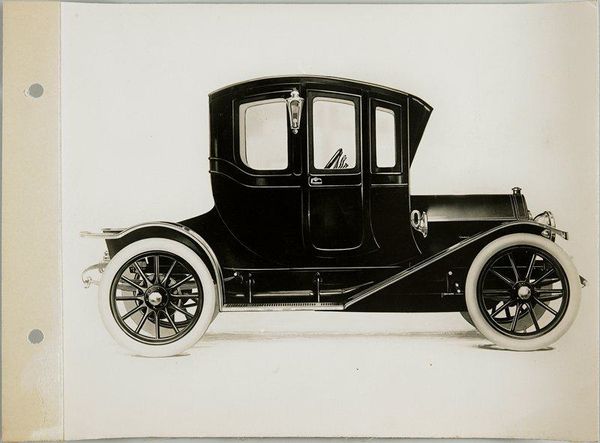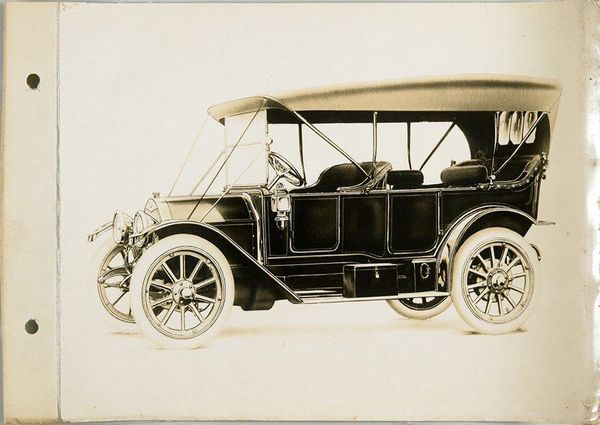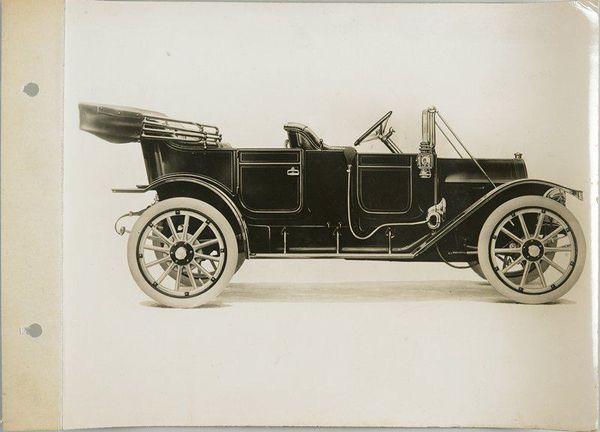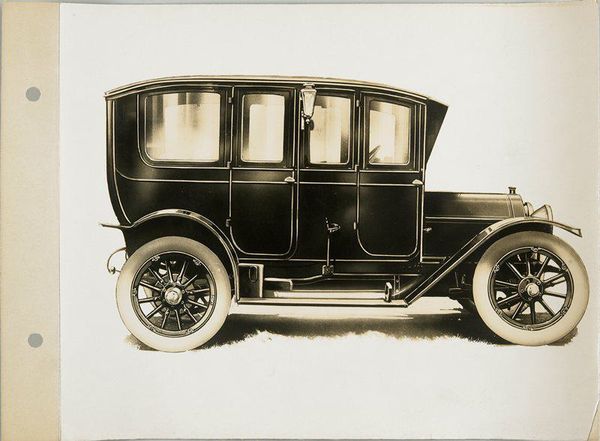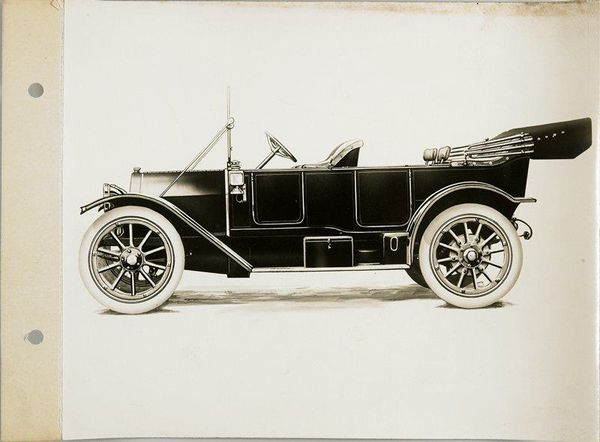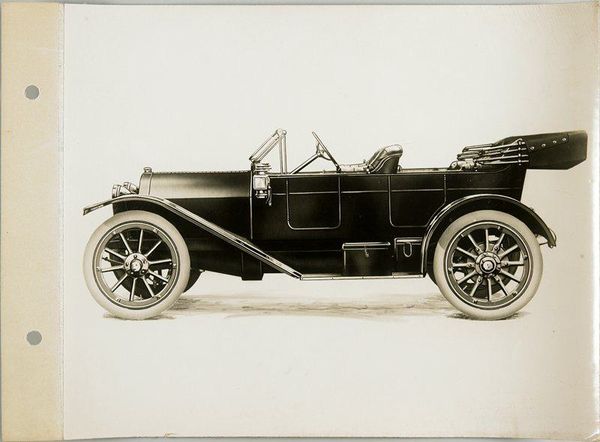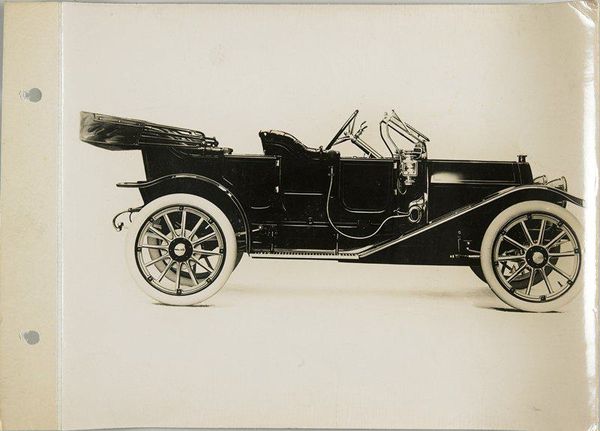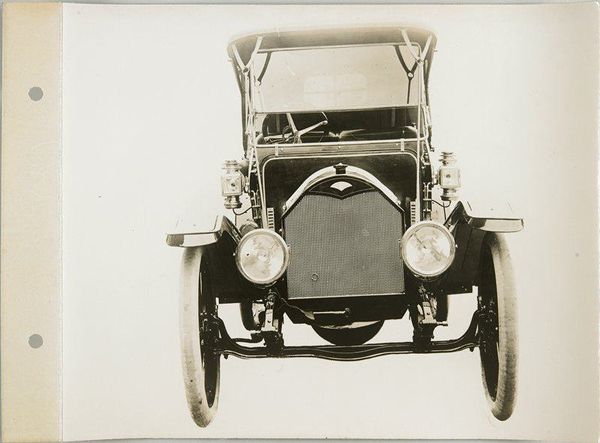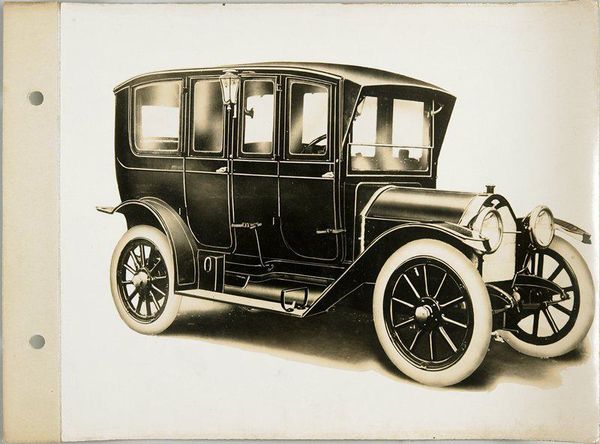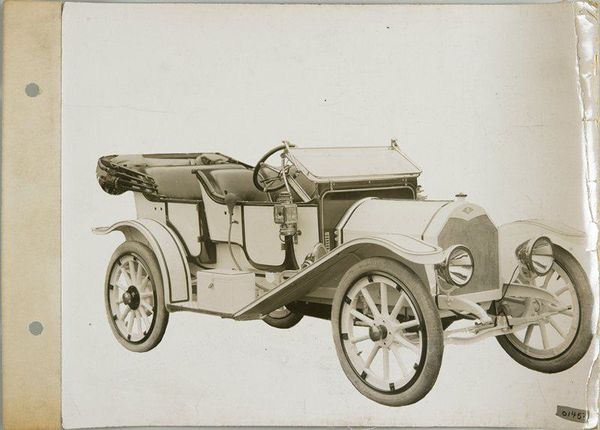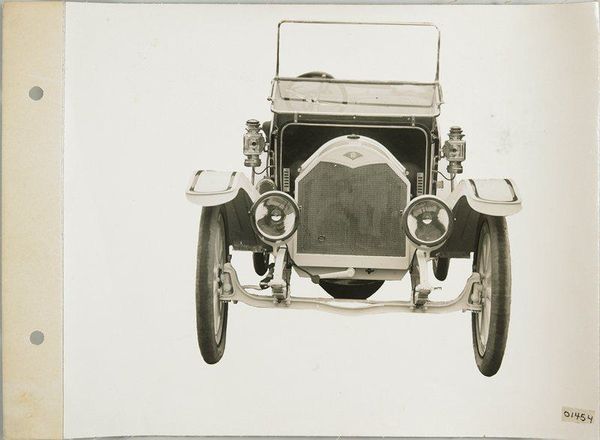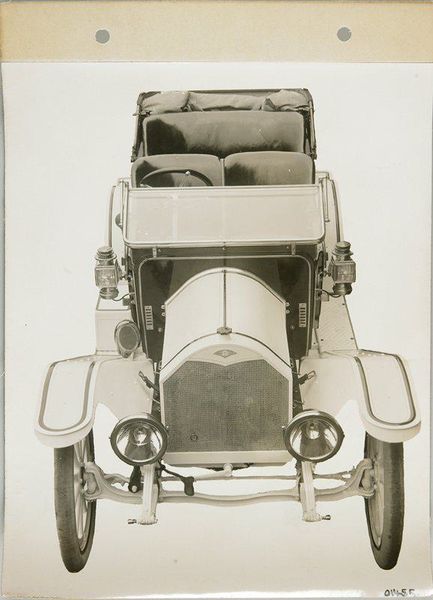
gelatin-silver-print, print, metal, photography, gelatin-silver-print
#
still-life-photography
#
gelatin-silver-print
# print
#
metal
#
landscape
#
photography
#
gelatin-silver-print
#
united-states
#
graphite
Dimensions: 7 7/16 x 9 5/16 in. (18.89 x 23.65 cm) (image)7 7/16 x 10 5/16 in. (18.89 x 26.19 cm) (mount)
Copyright: No Copyright - United States
Editor: Here we have an "Untitled" gelatin-silver print, believed to be made around 1911 by Spooner & Wells. The photo captures a car, almost like a portrait, set against a plain backdrop. What strikes me is how incredibly crisp and detailed the image is for its age. How do you interpret this work? Curator: That sharpness is key, isn't it? It highlights the then-burgeoning car culture, especially in the US. What was once a privilege for the elite rapidly became a symbol of broader access and, dare I say, freedom, albeit freedom that wasn’t equally accessible to everyone. Think about the intersecting power dynamics at play. Who had access to these cars? Who built them, and under what conditions? Whose landscapes were being transformed – often destructively – by this technology? Editor: That’s a perspective I hadn’t considered. I was focusing on the car itself, almost as an object of beauty, or progress. Curator: It's easy to be seduced by the aesthetics of technology. But it's vital to acknowledge the labor, resources, and often, social inequities embedded within these "advancements." How might the experience of seeing this photograph differ depending on the viewer's relationship to automobility and its socio-economic dimensions? Editor: I guess seeing it now, it makes me think about the climate crisis, and how car culture contributed to that, even back then. Curator: Precisely! It’s not just about the photograph’s aesthetic quality, but also about prompting a critical examination of our relationship with technology, consumption, and their impact on the world and society, specifically gendered mobility in the modern era. Editor: That’s really changed how I see the image, its historical moment, and the present. It's not just a picture of a car; it’s a prompt for a much wider conversation. Curator: Exactly! Art is often at its most powerful when it initiates these dialogues and interrogations.
Comments
No comments
Be the first to comment and join the conversation on the ultimate creative platform.
